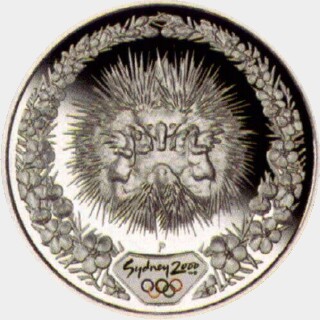



NumisTip is being integrated into NumisBid. Click here to view this page on NumisBid
?
The Sydney 2000 Olympics Five Dollar 'Echidna' Silver Coin is part of a collection containing 16 pieces. It was struck in sterling silver and were designed to represent both Australia's cultural history and environment. The set comprises of Festival of the Dreaming, Kangaroo, Early settlement, Great White Shark, Immigrants, Frilled Neck Lizard, Commerce, Emu, Sports and the Arts, Koala, Sydney Harbour, Platypus, Opera House, Echidna, Air and Kookaburra. They are all in a Five Dollar denomination. The set was released in 2000 following the successful Olympic Games from Sydney, Australia.
The
The Echidna has a life expectancy of more than 45 years. It can grow up to 50cm in length. It can be found in Australia and New Guinea. It was a mascot of the 2000 Sydney Olympics. They don't have any teeth, but they sniff out insects and allow them to crawl onto its sticky tongue. They have a great defence against predators as they tuck in their head and become a ball of sharp spikes. It's scientific name is Tachyglossus aculeatus and means 'spiny fast-tongue'.
Find out what dealers are paying with a subscription.
Subscribe now!Find out what coins have actually sold for and where with a Standard/Professional subscription.
Subscribe now!